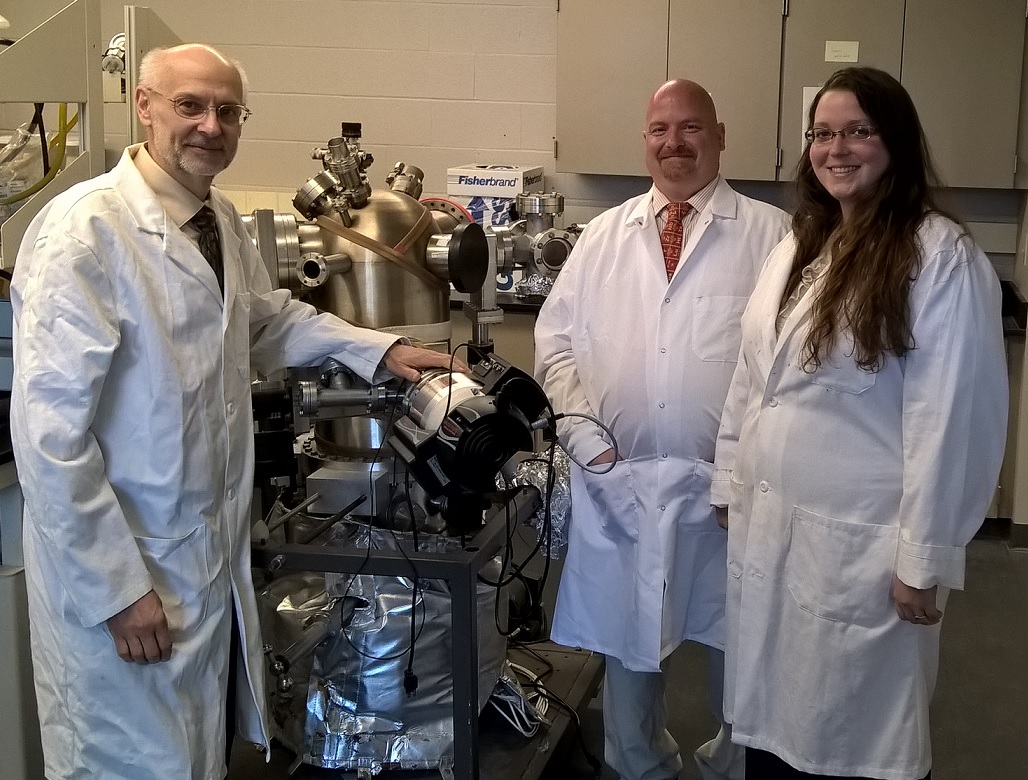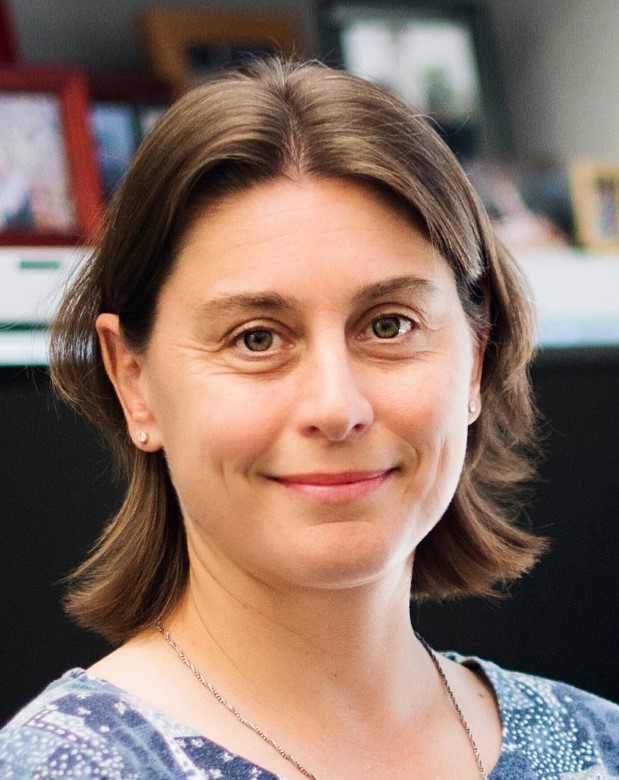Interactions with additives
Dr. Ashlie Martini | TLT Industry Relations December 2016
How the University of Akron partnered with industry to better understand additive-surface interactions.

From left to right: Paul Shiller, Jonathan Fouts and Marisa Seeley with a temperature-programmable desorption system in the Center for Surface Engineering and Lubrication Research at the University of Akron.
ONE OF THE KEY FUNCTIONS OF A LUBRICANT IS TO PROTECT machine elements from wear. This is accomplished by using lubricant formulations that contain antiwear and extreme pressure additives.
Although the use of these additives is widespread, little is known about how they interact with surfaces. There are a number of hypotheses concerning these interactions, but limited experimental data is available to explain the mechanisms by which additives interact with ferrous and non-ferrous surfaces. Understanding these mechanisms is a significant challenge in our field and one that required a team effort to tackle.
Last year a project was commissioned by the Industrial Advisory Board of the Center for Surface Engineering and Lubrication Research (CSELR) located at the University of Akron in Akron, Ohio, to conduct investigations into this important problem. STLE-member Dr. Paul Shiller, research scientist in the Timken Engineered Surfaces Laboratories, also at the University of Akron, was selected as the primary investigator on this project. CSELR was founded in 2014 by STLE Fellow Gary Doll, the Timken Professor of Surface Engineering at the University of Akron, as a result of requests from several large corporations. The mission of CSELR is to perform pre-competitive research on projects conceived and overseen by the Industrial Advisory Board of the center.
As part of this project, graduate students Marisa Seeley and Jonathan Fouts, both from the Chemical and Biomolecular Engineering Department at the University of Akron, have explored reactions occurring between sulphur-based additives and ferrous and non-ferrous surfaces as functions of temperature and/or pressure. One of the unique contributions the university-based team offers to this project is the availability of a range of complementary instruments and experiments to study additive-surface interactions.
So far the team has obtained several noteworthy findings. For example, their research has shown that the catalytic nature of ferrous surfaces appears to drive the formation of Fe-S bonds and that temperature is a critical parameter affecting this process. Furthermore, investigations of tribologically driven additive interactions with ferrous and non-ferrous pairings with W- and Ti-doped hydrogen-containing diamond-like carbon (DLC) films have provided results that support the hypothesis that a thionization mechanism influences hydrogen abstraction, which is responsible for an increased wear rate of these materials when they are exposed to S-based additives. In other words, wear is determined by reactions between S atoms and free W in W-DLC, which destabilizes the amorphous hydrocarbon matrix and allows for carbon in the matrix to cross link or graphitize.
These are important findings for the CSELR companies because the new information gleaned from this study provides new perspectives on the tribochemical mechanisms experienced by lubricated surfaces. As observed by STLE-member Dr. Farrukh Qureshi of The Lubrizol Corp. in Wickliffe, Ohio, “A consortium-based relationship between industry and university provides unique opportunities to gather resources and relate fundamental understanding to practical applications. This is a great experience for both the industry professionals and academics to get together and learn from each other.”
At the same time, Seeley and Fouts are gaining experience with using cutting-edge experimental methods to explore one of the most important research questions in our field. Seeley comments on the collaboration: “Working alongside industry partners really broadens the capabilities of research as a whole.” This collaboration provides both technical and professional training for these students. As Fouts describes, by working with industrial partners on his research he has not only “grown stronger in research skills” but “received feedback on how to best present myself to companies while job seeking, a benefit I had not expected.”
This is another great example of companies and universities working together to solve problems in tribology and lubrication engineering. If you have ideas for collaborations that you think demonstrate this theme, please contact me at
amartini@ucmerced.edu, and your research team might be highlighted in an upcoming edition of TLT.
 Ashlie Martini is a professor at the University of California-Merced and a member of STLE’s board of directors. You can reach her at amartini@ucmerced.edu
Ashlie Martini is a professor at the University of California-Merced and a member of STLE’s board of directors. You can reach her at amartini@ucmerced.edu.